Sports Medicine Education No. II - Low Back Pain
Anatomy
The lumbar spine is a complex structure that connects your upper body to your lower body. It consists of vertebrae, spinal cord, spinal nerves, intervertebral discs, facet joints, ligaments and muscles.

Figure 1. Side view of a segment of three lumbar vertebrae
Common causes of low back pain among athletes
- Sprains and strains
A strain of the muscle can occur when the muscle is poorly conditioned or overworked. The five lumbar vertebrae are interconnected via the ligaments. These ligaments may become stiff or weak through poor conditioning or overuse. When a sudden forceful movement occurs, the ligaments may be sprained. Spasm of the low back muscle may also occur when the ligaments are injured. These sprains and strains are the common causes of low back pain among athletes. - Discs
In the past, the discs were thought to have no sensory innervation. Only herniation or rupture of the discs, which caused impingement of the nerve root was thought to be the source of discogenic pain. However, the outer one-third to one-half of the anulus fibrosus (outside of the discs) do have a nerve supply. Torsional and compression injury can cause tear in the anulus fibrosus and thus pain. It may also become a predisposing factor for later nuclear herniation. - Facet joints
Possible causes of pain from the facet joints include subchondral fractures, capsular tears, capsular avulsions and haemorrage into the joint space. - Spondylolysis
Spondylolysis (stress fracture of the pars interarticularis) is seen in sports involving repeated hyperextension such as gymnastics, cricket and badminton. Spondylolisthesis (slipping of one vertebra on another) may occur in athletes with bilateral pars defects.
Preventing low back pain
- Posture
Poor posture stresses your spine: ligaments are overstretched, muscles tired and joints and nerves are put under pressure. Think tall: chest lifted, shoulders relaxed, chin tucked in and head levelled. Posture should be stable, balanced and relaxed when stitting, walking or standing. - Flexibility
Maintain good flexibility for your low back extensors, hip flexors, hamstrings and hip abductors. If these muscles are tight, you are prone to get injured because of increased lumbosacral stress. Please consult your physiotherapist and read our exercise booklet, "Stretching Exercises".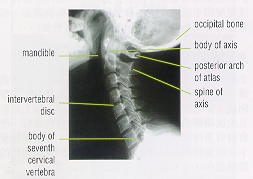
Figure 2a Stretching exercises for hip flexors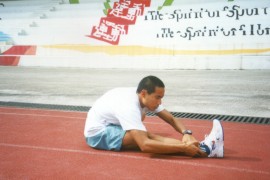
Figure 2b. Stretching exercise for hamstrings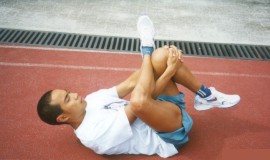
Figure 2c. Stretching exercise for gluteals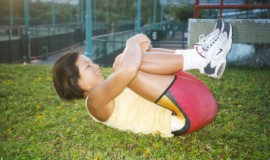
Figure 2d Stretching exercise for low back extensors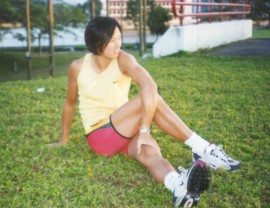
Figure 2e. Spinal retation (in sitting)
Figure 2f. Stretching exercise for external obliques latissimus dorsi & serratus anterior - Lumbar stabilisation
Lumbar stabilisation training aims at the co-contraction of the deep abdominals and low back extensors. It can help to prevent and relieve back pain. Please consult your physiotherapist and read our exercise booklet, "Lumbar Stabilisation Training".
Figure 3. Basic lumbar stabilisation exercise:
Correct activation feels tightening of the abdominals below the belly button, other areas especially the muscles above the belly button relaxed. - Lifting
Correct lifting technique helps to prevent low back pain. Keep your feet shoulder-width apart. Bend at the hips and knees. Grip the load firmly and hold it close to your body, tighten your stomach muscles and use the strong muscles of your legs to lift. Keep your back as straight as possible. Avoid twisting. Turn by using you feet, not your back! - Sleeping
Your mattress should be firm enough to support your natural shape. - Cross-training
Sports that involve a lot of compressive and torsional loading such as rowing, running and tennis are advised to include non-impact activities like swimming into their training programme. It gives the muscles, ligaments, discs and facet joints a chance to rest. However, breast stroke, crawl and butterfly should be avoided when you have acute low back pain. - Sporting technique
Poor technique in sports may increase stress on the structures of the lumbar spine. Techniques should be assessed by professional coach and any necessary corrections made under supervision.
Treatment and rehabilitation
Early intervention is essential. Physiotherapists might use electrotherapy, mobilisation, soft tissue mobilisation, manipulation, traction, acupuncture or therapeutic exercises to relieve pain, reduce inflammation, combat muscle spasm and to restore mobility. They will also recommend a modified training programme to you after discussing with your coach. When pain has decreased, you might be asked to go through a rehabilitation programme to prepare for a full return to your sport. It is important that you follow this programme as a weak and unconditioned back will be prone to recurrent injury. Specific muscle tightness and weakness, poor muscle control, poor shock absorbing shoes, leg discrepancies and training errors... etc will be addressed during this programme.
The content of this leaflet is provided by:
Sports Medicine Department, Athlete & Scientific Services Division, Hong Kong Sports Institute
For more information, please contact:
Sports Medicine Department
Telephone: (852) 2681 6134
All information in this pamphlet is for reference only
 ID: hksportsinstitute
ID: hksportsinstitute

